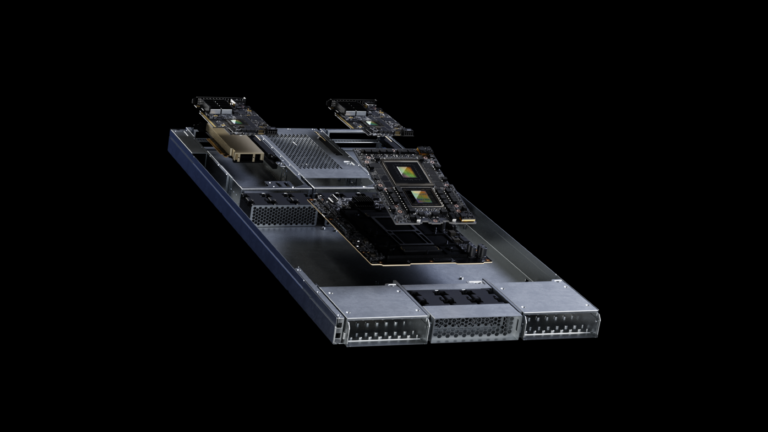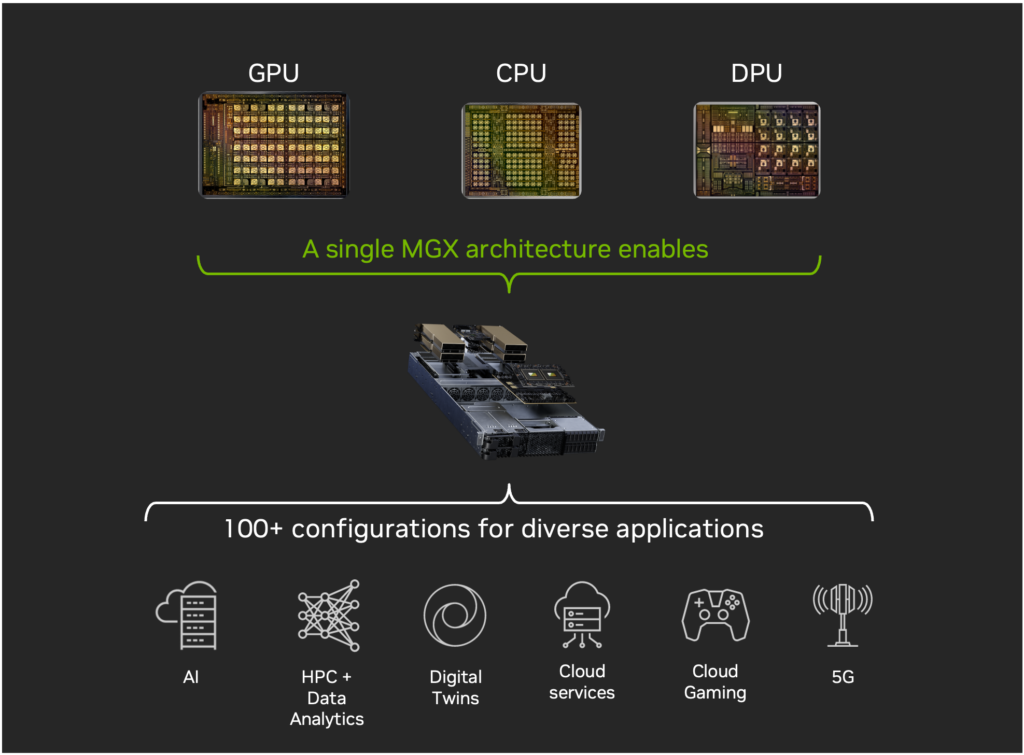
NVIDIA is driving fast-paced innovation in 5G software and hardware across the ecosystem with its OpenRAN-compatible 5G portfolio. Accelerated computing…
NVIDIA is driving fast-paced innovation in 5G software and hardware across the ecosystem with its OpenRAN-compatible 5G portfolio. Accelerated computing hardware and NVIDIA Aerial 5G software are delivering solutions for key industry stakeholders such as telcos, cloud service providers (CSPs), enterprises, and academic researchers.
TMC recently named the NVIDIA NVIDIA MGX with NVIDIA Grace Hopper Superchip (GH200), and NVIDIA Aerial Research Cloud as two of the 2023 INTERNET TELEPHONY Open RAN Products of the Year. The award “recognizes and honors companies that are the most innovative, and disruptive Open RAN products and solutions that have not just contributed to the growth and development of the industry, but have also delivered positive results.”
The awards showcase the deepening capabilities of the NVIDIA 5G ecosystem and illustrate how NVIDIA is helping the ecosystem to address particular market challenges. In particular, two key contributions stand out. First, the MGX with GH200 superchip delivers the most modular and ready-to-deploy accelerated computing solution for generative AI and 5G, driving ROI for telcos and CSPs. Second, Aerial Research Cloud offers the research community the most powerful, yet fully open, platform to do groundbreaking 5G+ and 6G research.
MGX with GH200: generative AI and 5G on NVIDIA accelerated cloud
The MGX with GH200 superchip features the NVIDIA GH200, which combines the NVIDIA Grace CPU and the NVIDIA H100 Tensor Core GPU with NVLink Chip-to-Chip in a single superchip in the MGX Reference Design (Figure 1). This combination can be used for a wide variety of use cases, from generative AI to 5G, with NVIDIA Aerial software at the edge and cloud.
The MGX with GH200 includes the NVIDIA BlueField-3 Data Processing Unit (DPU) targeted at telcos and CSPs. This enables them to deploy secure and accelerated computing platforms to run both generative AI and 5G for improving ROI and reducing TTM.
BlueField-3 inclusion in MGX enables crucial capabilities including accelerated VPC networking, zero-trust security, composable storage, and elastic GPU computing. Additionally, the NVIDIA Spectrum Ethernet switch with BlueField-3 DPU delivers a highly precise timing protocol for 5G as well as optimized routing for demanding AI workloads.
“The MGX with GH200-based generative AI and 5G data center platform is designed to improve the performance, scalability, and automated resource utilization of AI, 5G, and other telco-specific workloads from the edge to the cloud. This innovative solution will greatly benefit telcos who can leverage their space, power, and network connectivity to become AI factories of the future,” says Ronnie Vasishta, senior vice president for telecoms at NVIDIA.
Thanks to the GH200, the MGX server delivers one cloud platform for 5G and generative AI. This combination enables telcos and CSPs to maximize using their compute infrastructure by running 5G and generative AI interchangeably, boosting ROI significantly compared to a single-purpose 5G RAN infrastructure.
 Figure 1. The MGX with GH200 and BlueField architecture
Figure 1. The MGX with GH200 and BlueField architecture
At COMPUTEX 2023, NVIDIA announced that it is collaborating with Softbank on a pioneering platform for generative AI and 5G/6G applications based on MGX with GH200. SoftBank plans to roll it out at new, distributed AI data centers across Japan.
NVIDIA Aerial Research Cloud: accelerated computing for 5G+ and 6G research
Aerial Research Cloud provides developers, researchers, operators, and network equipment providers with all the requisite components to deploy a campus network for research. It is delivered in collaboration with the Open Air Alliance (OIA) enabling researchers to do groundbreaking work on 5G+ and 6G. In the last 6 months, three partners have launched networks based on the platform, with more in progress.
“Aerial Research Cloud is targeted at research and innovation use cases. It offers a fully featured, and the industry’s first open, software-defined, programmable (in C), ML-ready performant cloud service for wireless research,” said Vasishta.
Figure 2 features a 3GPP release 15 compliant solution which is operational over-the-air, and an O-RAN 7.2 split campus 5G SA 4T4R wireless stack, with all network elements from the radio access network and 5G core. It is based on NVIDIA Aerial SDK Layer 1, which is integrated with OAI’s distributed unit, centralized unit, or 5G NR gNB and 5G core node network elements.
 Figure 2. The Aerial Research Cloud (ARC) setup example configuration
Figure 2. The Aerial Research Cloud (ARC) setup example configuration
Aerial Research Cloud also supports developer onboarding and algorithm development in real-time wireless networks. It uses a blueprint to ease onboarding, staging, and integrating 5G Advanced network components and verification steps through bi-directional UDP traffic. Lastly, it provides complete access to source code in C/C++, to jump-start customizations and next-generation wireless algorithm research.
What’s next
TMCnet’s award recognizes how NVIDIA is shaping the future of 5G and the OpenRAN community. The MGX with the GH200 platform is uniquely positioned to support the AI-driven innovation that will be essential for 6G networks. OpenRAN and other telco workloads benefit greatly from the MGX platform’s ability to deliver high performance, scalability, and resource efficiency. The Aerial Research Cloud roadmap will continue to develop features in advanced wireless technologies of interest to innovators including AI and ML.
These solutions, and more, from the NVIDIA 5G portfolio are being showcased at NVIDIA GTC 2024.
Source:: NVIDIA
